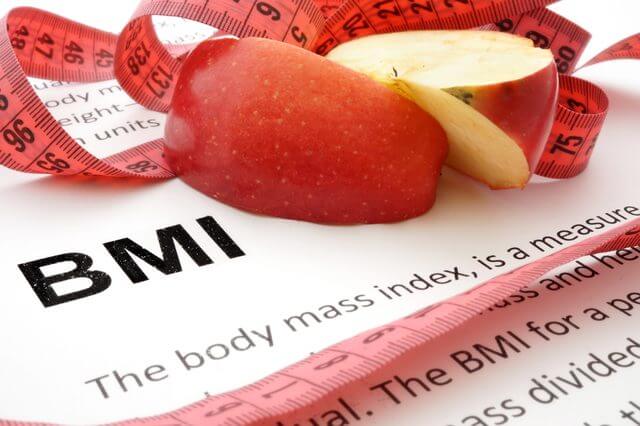Believe it or not, obesity is #1 cause of death in the world.
And there are plenty of reasons for that.
Let’s leave looks aside, for now, obesity can cause hypertension, diabetes, stroke, heart attack, cancer.
Scary, right?
I wrote about obesity earlier.
Today I want to talk about a widely known method for calculating your body mass index (BMI), which can show if a person is a normal weight, underweight, overweight, or obese.
So, let’s start.
What is BMI?
Body Mass Index (BMI) is a method that calculates the amount of tissue mass based on a person’s weight and height and it applies to men and women older than 20.
BMI is a simple measure that determines if someone is skinny or overweight.
You can calculate your BMI very simply, as I said before it’s a value derived from your weight and height.
Based on your weight, height, age, and gender the BMI calculator gives you information whether your weight is normal or not.
Basically, the higher the BMI is than the normal values, the higher the risk of heart disease, diabetes, and high blood pressure is.
How to calculate your BMI?
You can calculate your BMI using a very easy formula:
weight (lbs.) X 703: height (in x in) = BMI
Metric formula:
weight (kg) / height (m x m) = BMI
BMI calculator
You can check your BMI here:
Warning: file_get_contents(http://pest-exterminator-polly-10382.netlify.com/app.json): failed to open stream: HTTP request failed! HTTP/1.0 404 Not Found in /home/beaupzwx/public_html/wp-content/plugins/easy-bmi-calculator/template.php on line 67
Powered by Easy BMI Calculator
When you calculate your BMI check the table which determines the category where you belong.
So, if your BMI is 18- 25 then you are fine, but if it’s bigger then you fall in the overweight or obese categories.
BMI below 18,5 is a sign that a person might be anorexic, and value over 35 indicates morbid obesity.
Here you can see the BMI values:
| BMI Weight status | |
|---|---|
| Below 18.5 | Underweight |
| 25.0-29.9 | Overweight |
| 30.0-34.9 | Obesity |
| 35.0 and higher | Morbid obesity |
And here is an illustration that shows how people with different BMI look like:

BMI explanation
Underweight (anorexia) BMI <18,5.
It means that a person needs to increase the intake of calories.
Normal body weight BMI 18,5-25.
If your BMI is in this range, you have normal body weight.
As you age, the body fat percentage gradually increases, and the muscle mass decreases.
To stay in a good health and fitness you need to do exercise and eat healthily.
Overweight BMI 25-30.
This BMI value relates to a bigger waistline that shows a person is overweight and it has a higher risk of developing diseases such as high blood pressure, diabetes type 2, heart and blood vessels related diseases etc.
You need to make a workout plan (3-5 times a week) and to start a healthy diet.
A healthy diet for starters means cutting out sugar and sweets.
Obesity BMI 30-35.
This type of BMI relates to abdominal fat tissue accumulation which means people are at high risk of developing diabetes type 2 and cardiovascular diseases.
You need to consult your doctor for a workout and diet plan. Your doctor will make these plans according to your physical health.
Morbid obesity BMI over 35.
This type of obesity requires a team treatment and doctor’s monitoring.
Morbid obesity usually means the person already has blood vessels, heart, liver, or pancreas disease.
To get healthy and lose weight you need to be determined and persistent.
Is BMI accurate?
BMI is a general method and a person’s health condition can be fully assessed only by physicians.
The BMI method can’t be used as a precise way of determining your fat tissue based on your muscle, or bone mass since they are the right criteria for that.
A typical example where BMI is a bad indicator is when we take 2 people and one of them has excess fat and is obese and the other is a bodybuilder who has the same weight, but with big muscles.
Their BMI would be the same (BMI takes into consideration only height and weight, not the amount of muscle) and it could turn out that bodybuilders are obese, which of course isn’t true.
BMI is useful, but to make a detailed analysis you need other methods such as Hydrostatic Weighing, Anthropometric, Body-Fat Caliper, Bioelectrical Impedance Analysis.
Nevertheless, BMI doesn’t directly measure your body fat, and when it comes to muscular athletes it may show they have BMI in the obese category even though they don’t have excess body fat.
So, if you think your BMI is too high, consult your doctor.

Hi, I am Stacey and I am the author of beautyandhealthlife.com. I have 10+ years of experience in fitness and weight loss and I want to share my knowledge with you. I am here to help you lose weight and tone your body.





No Comments